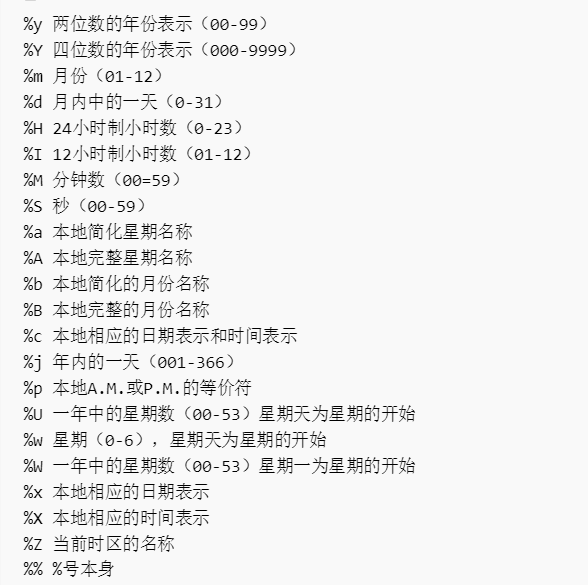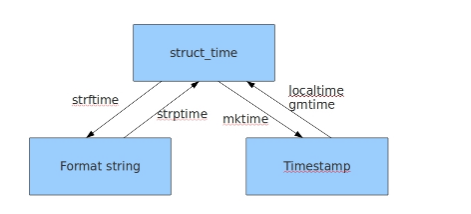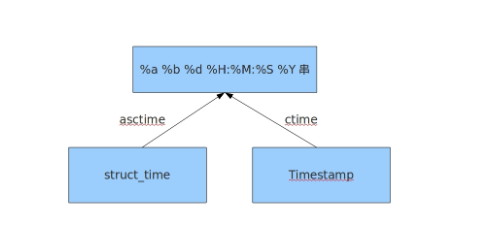collections
namedtuple 具名元组
我们知道tuple可以表示不变集合,例如,一个点的二维坐标就可以表示成:
但是,看到(1, 2),很难看出这个tuple是用来表示一个坐标的。
这时,namedtuple就派上了用场:
from collections import namedtuple # 可以通过列表的方式传值 # 具名元组 # point = namedtuple('坐标', ['x', 'y', 'z']) # 这边个人觉得用法有点像matplotlib ,tinker等等 它们都支持字符串,它们会自动切割成列表 # point = namedtuple('坐标', 'x y z') # p = point(1,2,4) # print(p) # print(type(p)) # print(p.x) # print(p.y) # print(p.z) # card = namedtuple('扑克牌',' color number') # A = card('黑桃', 'A') # print(A) # print(A.color) # print(A.number) # # # # city = namedtuple('日本', 'name person size') # c = city('东京', 'R老师', 'L') # print(c) # print(c.name) # print(c.person) # print(c.size)
deque 双端队列
使用list存储数据时,按索引访问元素很快,但是插入和删除元素就很慢了,因为list是线性存储,数据量大的时候,插入和删除效率很低。
deque是为了高效实现插入和删除操作的双向列表,适合用于队列和栈:
# from collections import deque # q = deque(['a', 'b', 'c']) # append appendleft # pop popleft pop(0) # q.append(1) # q.appendleft(2) # # # q.insert(0, 'hello world') # print(q.pop()) # print(q.popleft()) # print(q.popleft())
OrderDict 特殊有序字典
使用dict时,Key是无序的。在对dict做迭代时,我们无法确定Key的顺序。
如果要保持Key的顺序,可以用OrderedDict:
# normal_d = dict([('a',1),('b',2),('c',3)]) # print(normal_d) # from collections import OrderedDict不可思议吧 对就是这样 # order_d = OrderedDict([('a',1),('b',2),('c',3)]) # print(order_d, type(order_d)) # order_d1 = OrderedDict() # order_d1['x'] = 1 # order_d1['y'] = 2 # order_d1['z'] = 3 # print(order_d1) # for i in order_d1: # print(i) # print(order_d1)
defaultdict 特殊弹性字典
使用dict时,如果引用的Key不存在,就会抛出KeyError。如果希望key不存在时,返回一个默认值,就可以用defaultdict
# from collections import defaultdict # # values = [11, 22, 33, 44, 55, 66, 77, 88, 99, 90] # # 直接生成一个特殊字典对象,相对于先创造好字典里面的k1,k2键之后[]进行放值流程这个方法 # my_dict = defaultdict(list) # # print(my_dict['aaa']) # for value in values: # if value > 66: # my_dict['k1'].append(value) # else: # my_dict['k2'].append(value) # print(my_dict) # # my_dict1 = defaultdict(int) # print(my_dict1['xxx']) # print(my_dict1['yyy']) # # my_dict2 = defaultdict(bool) # print(my_dict2) # # my_dict3 = defaultdict(tuple) # print(my_dict3['mmm'])
Counter 统计次数
Counter类的目的是用来跟踪值出现的次数。它是一个无序的容器类型,以字典的键值对形式存储,其中元素作为key,其计数作为value。计数值可以是任意的Interger(包括0和负数)。Counter类和其他语言的bags或multisets很相似。
# 可以列出各个字符的数量 # 先循环当前字符串 讲每一个字符串都采用字典新建键值对的范式 from collections import Counter s = 'afafhkjfhl;fha你gkaj' res = Counter(s) print(res) for i in res: print(i)
time
表示时间的三种方式
在Python中,通常有这三种方式来表示时间:时间戳、元组(struct_time)、格式化的时间字符串:
(1)时间戳(timestamp) :通常来说,时间戳表示的是从1970年1月1日00:00:00开始按秒计算的偏移量。我们运行“type(time.time())”,返回的是float类型。
(2)格式化的时间字符串(Format String): ‘1999-12-06’
(3)元组(struct_time) :struct_time元组共有9个元素共九个元素:(年,月,日,时,分,秒,一年中第几周,一年中第几天等)

#常用方法 1.time.sleep(secs) (线程)推迟指定的时间运行。单位为秒。 2.time.time() 获取当前时间戳
#导入时间模块
>>>import time
#时间戳
>>>time.time()
1500875844.800804
#时间字符串
>>>time.strftime("%Y-%m-%d %X")
'2017-07-24 13:54:37'
>>>time.strftime("%Y-%m-%d %H-%M-%S")
'2017-07-24 13-55-04'
#时间元组:localtime将一个时间戳转换为当前时区的struct_time
time.localtime()
time.struct_time(tm_year=2017, tm_mon=7, tm_mday=24,
tm_hour=13, tm_min=59, tm_sec=37,
tm_wday=0, tm_yday=205, tm_isdst=0)
小结:时间戳是计算机能够识别的时间;时间字符串是人能够看懂的时间;元组则是用来操作时间的
几种时间格式之间的转换

时间类型的转换代码
#时间戳-->结构化时间 #time.gmtime(时间戳) #UTC时间,与英国伦敦当地时间一致 #time.localtime(时间戳) #当地时间。例如我们现在在北京执行这个方法:与UTC时间相差8小时,UTC时间+8小时 = 北京时间 >>>time.gmtime(1500000000) time.struct_time(tm_year=2017, tm_mon=7, tm_mday=14, tm_hour=2, tm_min=40, tm_sec=0, tm_wday=4, tm_yday=195, tm_isdst=0) >>>time.localtime(1500000000) time.struct_time(tm_year=2017, tm_mon=7, tm_mday=14, tm_hour=10, tm_min=40, tm_sec=0, tm_wday=4, tm_yday=195, tm_isdst=0) #结构化时间-->时间戳 #time.mktime(结构化时间) >>>time_tuple = time.localtime(1500000000) >>>time.mktime(time_tuple) 1500000000.0
#结构化时间-->字符串时间 #time.strftime("格式定义","结构化时间") 结构化时间参数若不传,则显示当前时间 >>>time.strftime("%Y-%m-%d %X") '2017-07-24 14:55:36' >>>time.strftime("%Y-%m-%d",time.localtime(1500000000)) '2017-07-14' #字符串时间-->结构化时间 #time.strptime(时间字符串,字符串对应格式) >>>time.strptime("2017-03-16","%Y-%m-%d") time.struct_time(tm_year=2017, tm_mon=3, tm_mday=16, tm_hour=0, tm_min=0, tm_sec=0, tm_wday=3, tm_yday=75, tm_isdst=-1) >>>time.strptime("07/24/2017","%m/%d/%Y") time.struct_time(tm_year=2017, tm_mon=7, tm_mday=24, tm_hour=0, tm_min=0, tm_sec=0, tm_wday=0, tm_yday=205, tm_isdst=-1)
其他时间格式转化为固定格式的字符串时间格式

#结构化时间 --> %a %b %d %H:%M:%S %Y串 #time.asctime(结构化时间) 如果不传参数,直接返回当前时间的格式化串 >>>time.asctime(time.localtime(1500000000)) 'Fri Jul 14 10:40:00 2017' >>>time.asctime() 'Mon Jul 24 15:18:33 2017' #时间戳 --> %a %b %d %H:%M:%S %Y串 #time.ctime(时间戳) 如果不传参数,直接返回当前时间的格式化串 >>>time.ctime() 'Mon Jul 24 15:19:07 2017' >>>time.ctime(1500000000) 'Fri Jul 14 10:40:00 2017'
datetime 日期时间,可以方便计算日期时间差
import datetime
# print(datetime.date.today()) # date>>>:年月日
# print(datetime.datetime.today()) # datetime>>>:年月日 时分秒
# res = datetime.date.today()
# res1 = datetime.datetime.today()
# print(res.year)
# print(res.month)
# print(res.day)
# print(res.weekday()) # 0-6表示星期 0表示周一
# print(res.isoweekday()) # 1-7表示星期 7就是周日
"""
(******)
日期对象 = 日期对象 +/- timedelta对象
timedelta对象 = 日期对象 +/- 日期对象
"""
# current_time = datetime.date.today() # 日期对象
# timetel_t = datetime.timedelta(days=7) # timedelta对象
# res1 = current_time+timetel_t # 日期对象
#
# print(current_time - timetel_t)
# print(res1-current_time)
random 随机生成模块
# 随机模块 import random # print(random.randint(1,6)) # 随机取一个你提供的整数范围内的数字 包含首尾 # print(random.random()) # 随机取0-1之间小数 # print(random.choice([1,2,3,4,5,6])) # 摇号 随机从列表中取一个元素 # res = [1,2,3,4,5,6] # random.shuffle(res) # 洗牌 # print(res)
列子:随机生成n位数的随机验证码
def get_code(n): code = '' for i in range(n): # 先生成随机的大写字母 小写字母 数字 upper_str = chr(random.randint(65,90)) lower_str = chr(random.randint(97,122)) random_int = str(random.randint(0,9)) # 从上面三个中随机选择一个作为随机验证码的某一位 code += random.choice([upper_str,lower_str,random_int]) return code res = get_code(4) print(res)
os 跟操作系统打交道的模块
import os # BASE_DIR = os.path.dirname(__file__) # MOVIE_DIR = os.path.join(BASE_DIR,'老师们的作品') # movie_list = os.listdir(MOVIE_DIR) # while True: # for i,j in enumerate(movie_list,1): # print(i,j) # choice = input('你想看谁的啊(今日热搜:tank老师)>>>:').strip() # if choice.isdigit(): # 判断用户输入的是否是纯数字 # choice = int(choice) # 传成int类型 # if choice in range(1,len(movie_list)+1): # 判断是否在列表元素个数范围内 # # 获取用户想要看的文件名 # target_file = movie_list[choice-1] # # 拼接文件绝对路径 # target_path = os.path.join(MOVIE_DIR,target_file) # with open(target_path,'r',encoding='utf-8') as f: # print(f.read()) # os.mkdir('tank老师精选') # 自动创建文件夹 # print(os.path.exists(r'D:\Python项目\day16\rion老师精选')) # 判断文件是否存在 # print(os.path.exists(r'D:\Python项目\day16\老师们的作品\tank老师.txt')) # 判断文件是否存在 # print(os.path.isfile(r'D:\Python项目\day16\tank老师精选')) # 只能判断文件 不能判断文件夹 # print(os.path.isfile(r'D:\Python项目\day16\老师们的作品\tank老师.txt')) # 只能判断文件 不能判断文件夹 # os.rmdir(r'D:\Python项目\day16\老师们的作品') # 只能删空文件夹 # print(os.getcwd()) # print(os.chdir(r'D:\Python项目\day16\老师们的作品')) # 切换当前所在的目录 # print(os.getcwd()) # 获取文件大小 # print(os.path.getsize(r'D:\Python项目\day16\老师们的作品\tank老师.txt')) # 字节大小 # with open(r'D:\Python项目\day16\老师们的作品\tank老师.txt',encoding='utf-8') as f: # print(len(f.read()))
sys 跟python解释器打交道的模块
import sys # sys.path.append() # 将某个路径添加到系统的环境变量中 # print(sys.platform) # print(sys.version) # python解释器的版本 print(sys.argv) # 命令行启动文件 可以做身份的验证 if len(sys.argv) <= 1: print('请输入用户名和密码') else: username = sys.argv[1] password = sys.argv[2] if username == 'jason' and password == '123': print('欢迎使用') # 当前这个py文件逻辑代码 else: print('用户不存在 无法执行当前文件')
python序列化 2大模块 --->
序列化的目的 1、以某种存储形式使自定义对象持久化; 2、将对象从一个地方传递到另一个地方。 3、使程序更具维护性。

写入文件的数据必须是字符串
基于网络传输的数据必须是二进制
序列化:其他数据类型转成字符串的过程 反序列化:字符串转成其他数据类型 json模块(******) 所有的语言都支持json格式 支持的数据类型很少 字符串 列表 字典 整型 元组(转成列表) 布尔值 pickle模块(****) 只支持python python所有的数据类型都支持
json 万能语言的交流大使
import json
dic1 = {'A' : 'a', 'B' : 'b', 'C' : 'c'} # 转化成字符串 , json字符串符号都为 " " ,python自身的为 ' ' ,会将其转化 str_dic = json.dumps(dic1) print(str_dic, type(str_dic)) 转化json字符串为字典形式 ,又称反序列化 ps: #注意,要用json的loads功能处理的字符串类型的字典中的字符串必须由""表示 dic2 = json.loads(str_dic) print(dic2, type(dic2))
dump和dumps相对比 除了一个是要文件对象外,还有就是它序列化自带写入功能,
load和loads相对比 load可以操作文件对象读取, 而loads只能直接对着字符串来操作 在文件中只有读取之后才可以操作
ps:个人总结: 文件操作选择 load dump
单纯字符串操作 loads dumps
import json
# with open('userinfo','w',encoding='utf-8') as f: # json.dump(d,f) # 装字符串并自动写入文件 # with open('userinfo','r',encoding='utf-8') as f: # res = json.load(f) # print(res,type(res)) # # with open('userinfo','w',encoding='utf-8') as f: # json.dump(d,f) # 装字符串并自动写入文件 # json.dump(d,f) # 装字符串并自动写入文件 # with open('userinfo','r',encoding='utf-8') as f: # res1 = json.load(f) # 不能够多次反序列化 # res2 = json.load(f) # print(res1,type(res1)) # print(res2,type(res2))
json问题解决列子:
解决不能多行写入的问题
# with open('userinfo','w',encoding='utf-8') as f: # json_str = json.dumps(d) # json_str1 = json.dumps(d) # f.write('%s\n'%json_str) # f.write('%s\n'%json_str1) # with open('userinfo','r',encoding='utf-8') as f: # for line in f: # res = json.loads(line) # print(res,type(res)) # t = (1,2,3,4) # print(json.dumps(t))
解决json字符串后中文转ASCII问题默认为True
不想转需要在后面家伙是加个参数ensure_ascii=False
# d1 = {'name':'朱志坚'} # print(json.dumps(d1,ensure_ascii=False))
pickle 可以把python中任意的数据类型序列化
(我个人送他个称号吧~python帝中帝,他处化身弟中弟)
ps:我还是依然爱它,那它有什么作用呢?
用法和json一样 不过dumps类型为字节 <class 'bytes'>
pickle.dumps(d)
# pickle # import pickle # d = {'name':'jason'} # res = pickle.dumps(d) # 将对象直接转成二进制 # print(pickle.dumps(d)) # res1 = pickle.loads(res) # print(res1,type(res1))
同理 ,load dump 用于操作文件 不过有一点必须注意:
用pickle操作文件,打开模式必须为b模式!!!!!!
""" 用pickle操作文件的时候 文件的打开模式必须是b模式 """ # with open('userinfo_1','wb') as f: # pickle.dump(d,f) # with open('userinfo_1','rb') as f: # res = pickle.load(f) # print(res,type(res))
两者序列化方式的纠缠点
这时候机智的你又要说了,既然pickle如此强大,为什么还要学json呢?
这里我们要说明一下,json是一种所有的语言都可以识别的数据结构。
如果我们将一个字典或者序列化成了一个json存在文件里,那么java代码或者js代码也可以拿来用。
但是如果我们用pickle进行序列化,其他语言就不能读懂这是什么了~
所以,如果你序列化的内容是列表或者字典,我们非常推荐你使用json模块
但如果出于某种原因你不得不序列化其他的数据类型,而未来你还会用python对这个数据进行反序列化的话,那么就可以使用pickle
subprocess 创建一个新的进程让其执行另外的程序
并与它进行通信,获取标准的输入、标准输出、标准错误以及返回码等。
使用列子:
""" 1.用户通过网络连接上了你的这台电脑 2.用户输入相应的命令 基于网络发送给了你这台电脑上某个程序 3.获取用户命令 里面subprocess执行该用户命令 4.将执行结果再基于网络发送给用户 这样就实现 用户远程操作你这台电脑的操作 """ # while True: # cmd = input('cmd>>>:').strip() # import subprocess # obj = subprocess.Popen(cmd,shell=True,stdout=subprocess.PIPE,stderr=subprocess.PIPE) # # print(obj) # print('正确命令返回的结果stdout',obj.stdout.read().decode('gbk')) # print('错误命令返回的提示信息stderr',obj.stderr.read().decode('gbk'))



 浙公网安备 33010602011771号
浙公网安备 33010602011771号